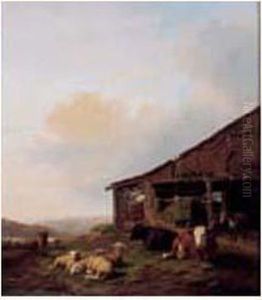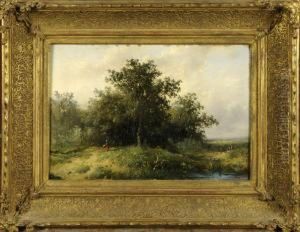Auguste Morren Paintings
Auguste Morren was a Belgian painter known for his contributions to the Neo-Impressionist movement. Born on June 24, 1866, in Ghent, Belgium, he developed an interest in art at an early age and pursued his passion by studying at the Royal Academy of Fine Arts in Ghent. His early work was influenced by the traditional academic style, but his approach evolved significantly over time.
In the late 1880s and early 1890s, Morren became increasingly interested in the avant-garde movements of the time. He was particularly drawn to the work of Georges Seurat and the Neo-Impressionists, who were known for their innovative use of color and pointillist technique. Morren adopted these methods, which involved applying small, distinct dots of color to the canvas that, when viewed from a distance, would blend into a coherent image. This technique allowed Morren to explore the interplay of light and shade, as well as the vibrant dynamism of color.
Auguste Morren's work received recognition in Belgium, and he exhibited with other Neo-Impressionists. He was a member of various artistic circles and actively participated in exhibitions both in Belgium and abroad. His paintings often depicted rural landscapes, urban scenes, and genre paintings, reflecting a keen interest in capturing the atmosphere and mood of a place or moment.
Despite his alignment with Neo-Impressionism, Morren's style remained distinct and individual. He never fully adhered to the strict principles of the movement and instead used the pointillist technique as a means to express his artistic vision. Throughout his career, he maintained a balance between the innovative aspects of Neo-Impressionism and his own artistic instincts.
Auguste Morren died on August 28, 1941, in Elsene, Belgium. His contributions to Belgian art and the Neo-Impressionist movement remain recognized to this day, and his works are part of various collections in museums and galleries, though he may not be as widely known as some of his contemporaries. Morren's artistic journey reflects the broader narrative of late 19th-century art, where experimentation and a break from tradition paved the way for the diverse art movements of the 20th century.

